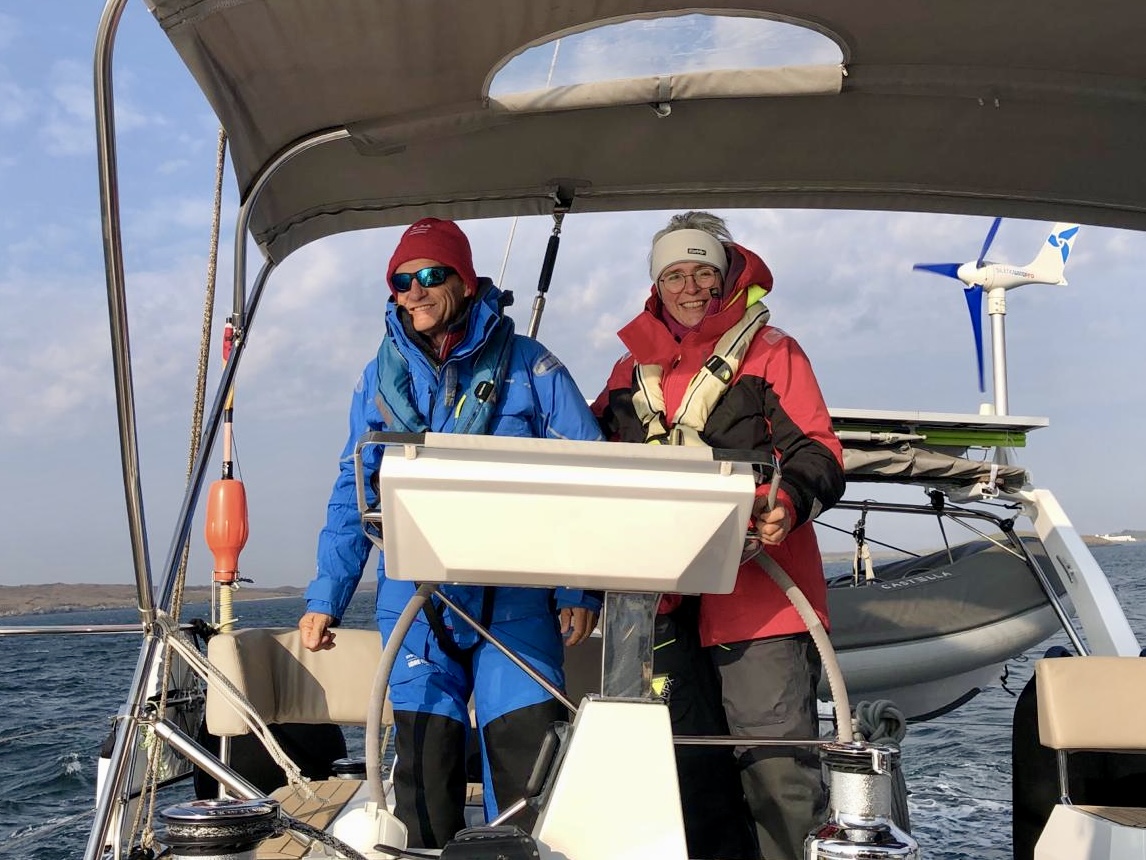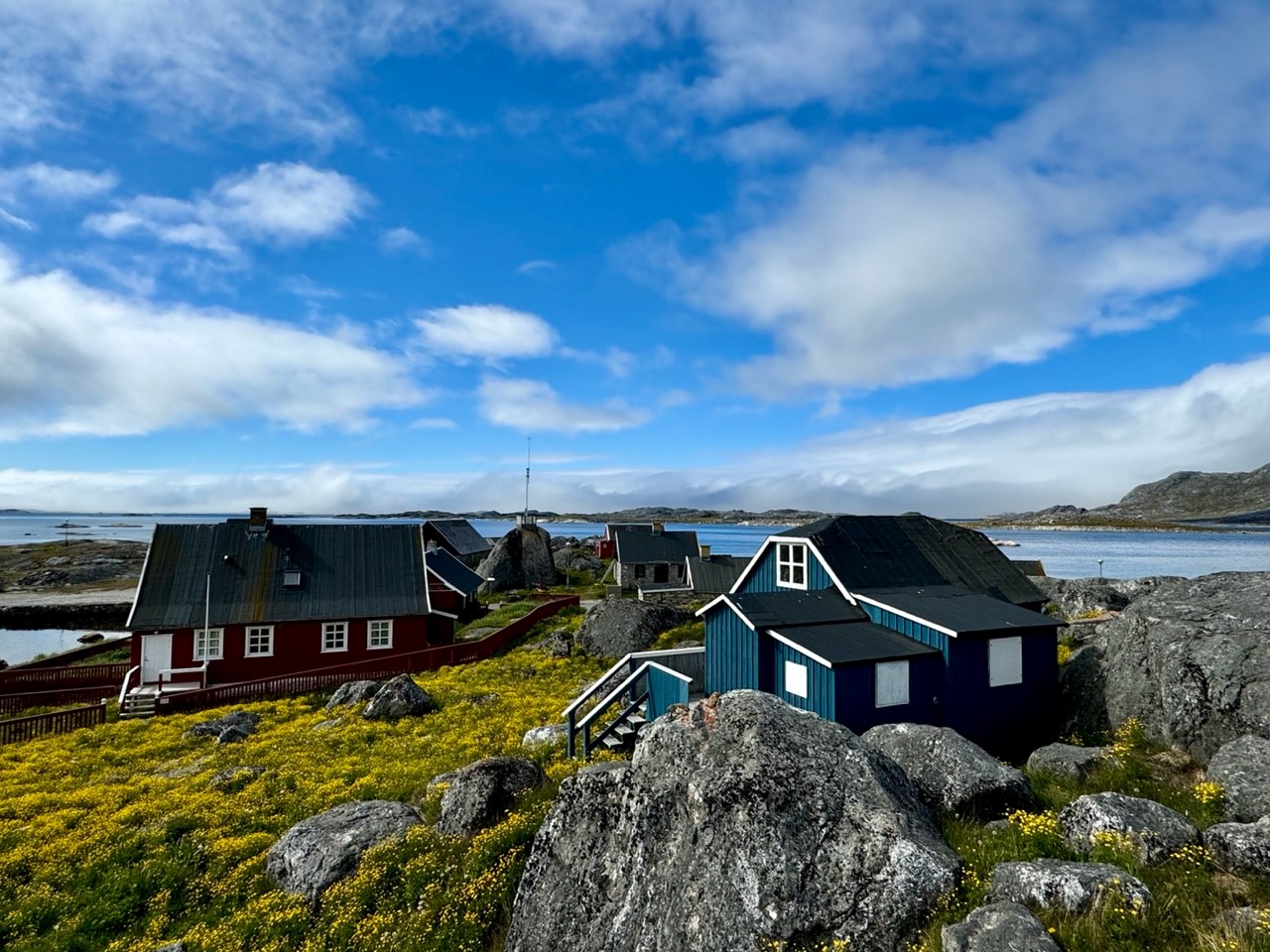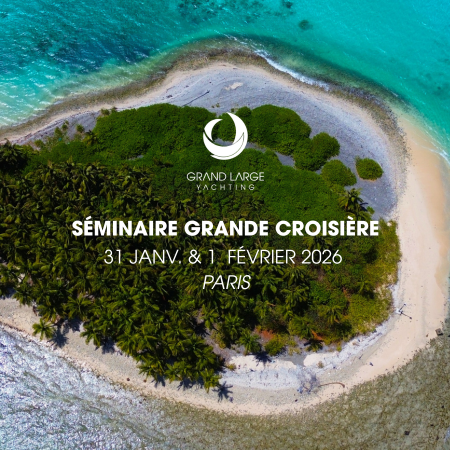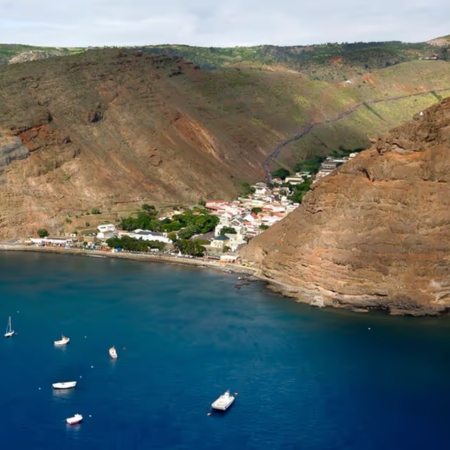CASTELLA - The legendary Viking trail withALLURES 51.9
The legendary Viking Route: 4,000 miles of adventure following the ancestral route of the Nordmen who discovered and settled Greenland, then North America. Marianne and Markus traveled this mythical route aboard their ALLURES 51.9 from Cherbourg to Nova Scotia. An inspiring journey...

Growlers, Greenland and the New World: CASTELLA on the Viking Route
Following our Swiss owners Marianne and Markus aboard their Allures 51.9. The scientific community now recognizes that there was no Christopher Columbus, but rather Icelandic Vikings who discovered the American continent almost half a century before him. Around the year 1000, a man named Leif Eriksson reached the "New World", following in the footsteps of his father, who had already settled in Greenland.
Although Viking settlements in America only existed for a few years, the image of these intrepid Nordmen crossing the tempestuous, ice-laden North Ocean aboard their square-sailed ships continues to fascinate us.
The "Viking Route" has thus become a must for sailors in search of Arctic adventure - like Marianne and Markus.

The ideal boat for a trip to Greenland: CASTELLA, an Allures 51.9
In 2019, this experienced sailing couple signs up for the first model in the new Allures 51.9 range.
" An aluminum boat, a variable draught, not to mention insulation and heating: all essential for sailing so far north," recalls Markus." And we also chose Allures because of their impeccable reputation in the world of exploration yachts."
Markus knows what he's talking about: a marine scientist by training, he has been sailing for over 40 years on both sailboats and tall ships.
Marianne, his wife, has spent her life on and under water as a keen diver. After starting out on a J/88 in Switzerland, she has been sailing offshore for over ten years.
"CASTELLA is my floating home," smiles Markus. For them, the shipyard's sturdiness, rigidity and 100% blue water cruising philosophy make it the perfect sailboat. "Big enough to welcome friends, but perfectly manageable for two. Reliable in the worst conditions, at high latitudes and in the tropics. A true 'go anywhere' yacht."
The Viking Route would be their first major ocean adventure - from Cherbourg, where CASTELLA was built.

First stage to Iceland: calm... and molten lava
After two years in French and British waters, CASTELLA leaves Cherbourg at the end of March 2024 for the Viking Route.
With the risk of winter storms looming, the crew know they can encounter the worst on the way to Ireland. Yet Poseidon proves merciful: sometimes even the engine has to take over... until it breaks down due to a faulty oil sensor.
The RNLI then tows CASTELLA to the small port of Arklow, south of Dublin. Once repaired, she set off again: east coast of Ireland, western Scottish islands such as Islay, Oban, Ullapool, then Stornoway, heading for the Faroes.
Thanks to surprisingly clement weather, CASTELLA sailed on calm seas, with downwind conditions... but freezing nights and foggy days heralded the harshness of northern latitudes. Lacking time, the crew made only two stops in the Faroe Islands: Greenland awaited them.
A weather window finally opens: we head for the south of Iceland, some 450 miles away.
The arrival on Vestmannaeyjar is magical, as is the passage close to the Grindavík volcanic fault where molten lava is visible from the boat - fascinating and terrifying at the same time.
CASTELLA then stayed in Reykjavik for several weeks, until the pack ice retreated and opened up the passage to Greenland.

Keep a close eye on the weather: icebergs are coming
Navigating through ice is always risky. Markus insists: you have to analyze not only the current situation, but also the history of previous winters. Some years, the pack ice extends very far, others much less.
In 2024, an ice-rich year, at the end of May the pack ice stretched to 60 km off the coast of Tasiilaq - twice as far as the previous year.
Fortunately, at the end of June, glaciological maps revealed an opening. The insurer imposes a maximum permissible ice thickness, so we have to seize the window.
On July 15, they left Iceland.
CASTELLA made good progress despite moderate winds, but the engine ran for 26 hours over 5 days.
Air temperature: 8°C. Water temperature: 12°C.... Water temperature: 12°C... then suddenly 4°C as the yacht enters the Greenland Current, the powerful ice flow that brings pack ice and icebergs.
The crew monitor weather, wind and ice conditions with Starlink, perfectly operational despite the high latitudes.
A few twists and turns:
- a faulty diesel filter,
- extreme temperature variations,
- a sudden return of almost "Mediterranean" sunshine,
- then... the first colossal icebergs appear on the horizon.
A unique moment after 650 miles.

"Ice can drift at 2 knots!"
10 miles from the entrance to Prince Christian Sound, the fog is falling and the ice is cracking around the boat in a spectral atmosphere.
Growlers, small but formidable submerged blocks, are multiplying. Marianne confides that sailing an Allures aluminium hull provides incomparable safety, both psychological and real.
The problem: ice moves. Current and wind are constantly moving it.
CASTELLA moves slowly under engine, under constant surveillance from the bridge.
At anchor, the crew think they can breathe a sigh of relief... until, in the early hours of the morning, the ice creaks against the hull. The anchor has to be weighed and we must leave immediately: routine in Greenland.
Fortunately, the day then begins with an unforgettable passage through Prince Christian Sound in brilliant sunshine.

From Greenland to Nova Scotia: "New World in Sight!
CASTELLA stayed in Greenland for 3 weeks, travelling from fjord to fjord, anchoring in deserted bays or visiting tiny villages.
On land, a rifle was indispensable: polar bears were omnipresent. Fortunately, no incidents.
The encounters with Greenlanders are striking: a warm welcome, curiosity, simplicity. "We could write a whole book on these memories alone," smiles Marianne.
Last stop: Narsarsuaq, population 130. International air links, ideal for a change of crew before the long crossing.
From Qaqortoq (population 3,500), the center of the seal industry, CASTELLA refuels all the way... then heads for Halifax, Nova Scotia.
The yacht's average speed is 6 knots, in fine conditions. But in the Labrador Sea, we still have to keep an eye on the glaciological charts: even in summer, icebergs descend with the Labrador Current.
After five fine days at sea, the last of which was spent sailing close-hauled, the crew could smell the forest!
The American continent is here.
CASTELLA reaches Lewisporte, Newfoundland, then Halifax on August 17.
A tropical storm quickly passes without damage. They finally arrive at the Royal Nova Scotia Yacht Squadron, America's oldest yacht club, at the end of a journey of almost 4,000 miles.

A brave and solid sailboat
What was for many a "baptism of fire" was for CASTELLA a veritable "baptism of ice".
Despite a few minor mechanical problems, the boat lived up to its promise.
"It's an incredibly stable and robust platform, which gives confidence even to guests unaccustomed to the open sea," explains Markus.
Marianne confirms that CASTELLA has already weathered several storms since it was launched in 2022.
Experienced navigators with hundreds of miles under their belts, they claim that the Viking Route was their most demanding - and most exciting - adventure yet.
Today, 100% reassured by their boat's capabilities as well as their own, they continue their voyage with renewed confidence.

To find out more about theAllures 51.9 : click here

latest news

latest experiences





.jpg)


%20(1).jpg)
.png)











%402x.svg)